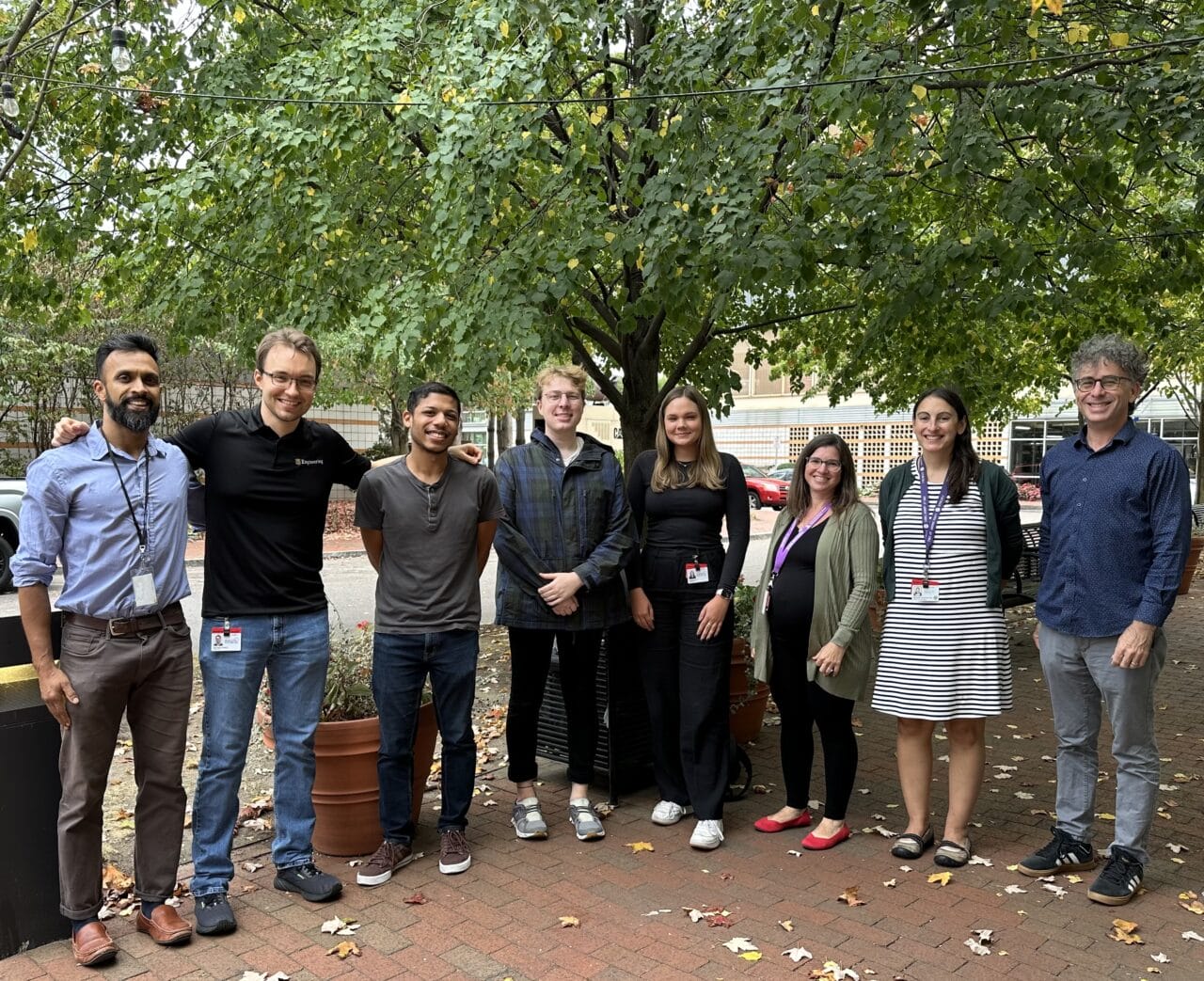Researchers Find “Compelling Benefits” of Distributing MOUD in Shelters
October 24, 2024

Caroline Savitzky
Members of the research team, including first author Avik Chatterjee (far left), posing for a photo.
Overdose is the leading cause of death among people experiencing homelessness. New research shows that bridging gaps in access to medication for opioid use disorder can be lifesaving, as well as cost-saving for the healthcare sector.
The Bottom Line
Distributing buprenorphine, an FDA-approved medication for opioid use disorder (MOUD) in shelters is a promising strategy to meet people experiencing homelessness where they are with proven, effective harm-reduction strategies. Because this population is disproportionately vulnerable to overdose deaths, this strategy could bridge gaps in access to treatment and reduce deaths.
Context
Overdose is the leading cause of death among people experiencing homelessness. From 2014 to 2016, Boston Healthcare for the Homeless reported 1 in 3 patient deaths ascribed to an opioid-related overdose. Researchers found that access to MOUDs such as buprenorphine, an opioid partial agonist that is often known under the brand name Suboxone or Sublocade, can avert opioid-associated fatalities by a reduction of 9.2%. Buprenorphine can be prescribed or dispensed at a physician’s office, making it easier to access than other MOUDs. However, uptake of these effective medications is low among people experiencing homelessness due to gaps in healthcare accessibility.
Study Objective
To understand the clinical outcomes and economic impact of a statewide shelter-based program that distributes buprenorphine to eligible shelter guests.
The Details
Using a simulation model, researchers led by Boston Medical Center’s Grayken Center for Addiction looked at how offering buprenorphine in shelters across Massachusetts could impact overdose rates and life expectancy, while accounting for associated healthcare costs. The study spanned 10 years, from 2013 to 2023, and looked at 13,800 people experiencing homelessness.
Findings
The team found that offering buprenorphine at shelters was associated with a 9.2% reduction in overdose deaths and higher life expectancy by 0.9 additional life-years per person. The strategy saved money for the healthcare sector at a rate of $1,300 per person. Yes, buprenorphine visits created $44.7 million in additional medication and clinical costs, but those costs were offset by savings of $69.4 million in overdose and associated healthcare costs.
Pull Quote
“Expanding shelter-based buprenorphine access in Massachusetts could be an opportunity to address overdoses among a historically marginalized population,” says Avik Chatterjee, MD, MPH, first author on the paper and addiction specialist at BMC. “This innovative approach not only bridges a critical gap in addiction treatment but also reflects our commitment to equity and compassionate care for people experiencing homelessness.”
Source:
Chatterjee, A.; Stewart, E.A; Assoumou, S.A.; Chrysanthopoulou, S.A.; Zwick, H.; Harris, R.A; O’Dea, R.; Schackman, B.R.; White, L.F.; and Linas, B.P. (2024) “F Health and Economic Outcomes of Offering Buprenorphine in Shelters in Massachusetts: A Simulation Study” JAMA Network Open. doi:10.1001/jamanetworkopen.2024.37233
A version of this research brief first appeared on BMC.org


